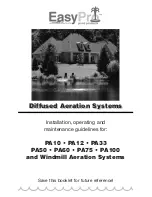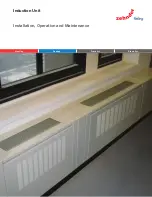
Weldarc 135, 145, 185 | Operator Manual | Model No MC110-0 / MC111-0 / MC112-0
7
6
Walls touching combustibles on opposite
sides should not be welded on or cut. Walls,
ceilings, and floor near work should be
protected by heat-resistant covers or shields.
A person acting as Fire Watcher must be
standing by with suitable fire extinguishing
equipment during and for some time after
welding or cutting if;
– Combustibles (including building
construction) are within 10 metres.
– Combustibles are further than 10
metres but can be ignited by sparks.
– Openings (concealed or visible) in floors
or walls within 10 metres may expose
combustibles to sparks.
– Combustibles adjacent to walls,
ceilings, roofs, or metal partitions can
be ignited by radiant or conducted heat.
After work is done, check that area is free
of sparks, glowing embers, and flames.
A tank or drum which has contained
combustibles can produce flammable
vapours when heated. Such a container
must never be welded on or cut, unless
it has first been cleaned as described in
AS.1674.2. This includes a thorough steam
or caustic cleaning (or a solvent or water
washing, depending on the combustible’s
solubility), followed by purging and inerting
with nitrogen or carbon dioxide, and using
protective equipment as recommended in
AS.1674.2. Water-filling just below working
level may substitute for inerting.
Hollow castings or containers must be
vented before welding or cutting. They can
explode. Never weld or cut where the air may
contain flammable dust, gas, or liquid vapours.
Shock Prevention
Exposed conductors or other bare metal
in the welding circuit, or ungrounded
electrically alive equipment can fatally
shock a person whose body becomes
a conductor. Ensure that the equipment
is correctly connected and earthed. If
unsure have the equipment installed by a
qualified electrician. On mobile or portable
equipment, regularly inspect condition of
trailing power leads and connecting plugs.
Repair or replace damaged leads.
Fully insulated electrode holders should
be used. Do not use holders with
protruding screws. Fully insulated lock-type
connectors should be used to join welding
cable lengths.
Terminals and other exposed parts of
electrical units should have insulated knobs
or covers secured before operation.







































